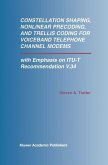The approach adopted in Digital Synthesizers and Transmitters for Software Radio will provide an understanding of key areas in the field of digital synthesizers and transmitters. It is easy to include different digital techniques in the digital synthesizers and transmitters by using digital signal processing methods, because the signal is in digital form. By programming the digital synthesizers and transmitters, adaptive channel bandwidths, modulation formats, frequency hopping and data rates are easily achieved. Techniques such as digital predistortion for power amplifier linearization, digital compensation methods for analog I/Q modulator nonlinearities and digital power control and ramping are presented in this book. The flexibility of the digital synthesizers and transmitters makes them ideal as signal generators for software radio. Software radios represent a major change in the design paradigm for radios in which a large portion of the functionality is implemented through programmable signal processing devices, giving the radio the ability to change its operating parameters to accommodate new features and capabilities. A software radio approach reduces the content of radio frequency (RF) and other analog components of traditional radios and emphasizes digital signal processing to enhance overall transmitter flexibility. Software radios are emerging in commercial and military infrastructure.
Dieser Download kann aus rechtlichen Gründen nur mit Rechnungsadresse in A, B, BG, CY, CZ, D, DK, EW, E, FIN, F, GR, HR, H, IRL, I, LT, L, LR, M, NL, PL, P, R, S, SLO, SK ausgeliefert werden.
Hinweis: Dieser Artikel kann nur an eine deutsche Lieferadresse ausgeliefert werden.









